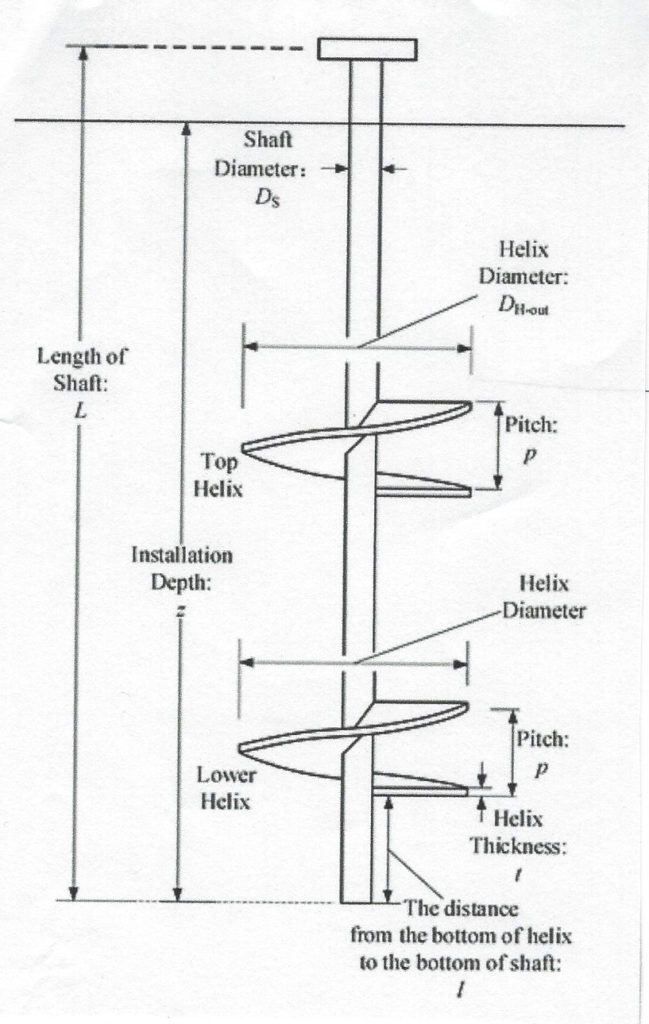When the glaciers of the ice age receded from North America, they left behind a vast array of different soil and rock conditions. In the valleys, the remaining silt created a condition of deep soil. The soil made the valleys a nutrient source for vegetation to grow and prosper. Meanwhile, the knolls and hilltops were left with minimum topsoil covering the limestone shelf

As a result of this process, where one decides to construct ta house affects the design of the foundation system. Building at the top of the hill will typically require expensive rock excavation, and quite possibly, elimination of a basement.
If one chooses to build in the valley, deep and unstable soil conditions may be encountered. In this scenario, a grade beam alone may not have the soil bearing capacity needed to support the house. In order to reach proper soil bearing capacity, an alternative system is required. A quick, inexpensive solution to this situation is the helical pier.
What is a Helical Pier
A helical pier is a ground anchoring system composed of a foundation pin with galvanized steel helices. The helices are made of galvanized steel in order to reduce rust and extend the shelf life of the underground pier. In residential use, with lesser loads, a composite helical can be utilized.
Helical piers are also referred to as screw-piles, screw piers, screw anchors, and screw foundations. Helical piers are typically used for constructing deep foundations. Based on industry standards and accepted geotechnical principles, manufactures use up-to-date software to design and produce helical piers that are unique to the soil conditions.
The helical piers are manufactured in varying sizes of tubular steel. The piers are formed to match a specific pitch, or into a flat plate. The number, diameters, and position of the helicals are designed to meet specific structural requirements. Helical piers are engineered and designed to meet the requirements of all local and regional building codes.
How do Helical Piers Work?
Helical piers are hydraulically driven into the soil until the necessary bearing capacity is reached. The steel screws provide for the necessary compressive loads, while the pier itself resists the loads thru friction. In addition, the helical piers provide lateral stability. Typically on a residential project, the helical piers are spaced ten (10) feet on center.
In addition, helical piers are utilized where there is past structural damage. An existing house, built on unstable soils, may suffer from settling. The settling is seen in the cracking of plaster, uneven floors, and most notably, cracking in the foundation walls. To stabilize the structure, a common practice is to employ helical piers. The piers will provide the necessary loading capacities, stabilizing the structure, and thus allowing repair to the damaged areas.
Benefits of Helical Piers
Helical piers are utilized in residential projects are three (3) significant reasons:
- The cost to excavate unstable soils can be excessive. Helical piers are cost efficient to install and minimize excessive excavation costs.
- Helical piers can be installed quickly with minimum disruption to the project schedule.
- Helical piers have a lesser environmental impact on the site by minimizing the carbon footprint.
Cost of Helical Piers
The cost of helical piers can vary greatly. Costs of helical piers are dependent upon the following factors:
- Region and/or location of the project
- Size of the pier
- Depth of the pier.
As a starting point, a budgetary costs of $150.00 to $250,00 per pier is appropriate.
For more information on helical piers, refer to “Helical Piers FAQ”